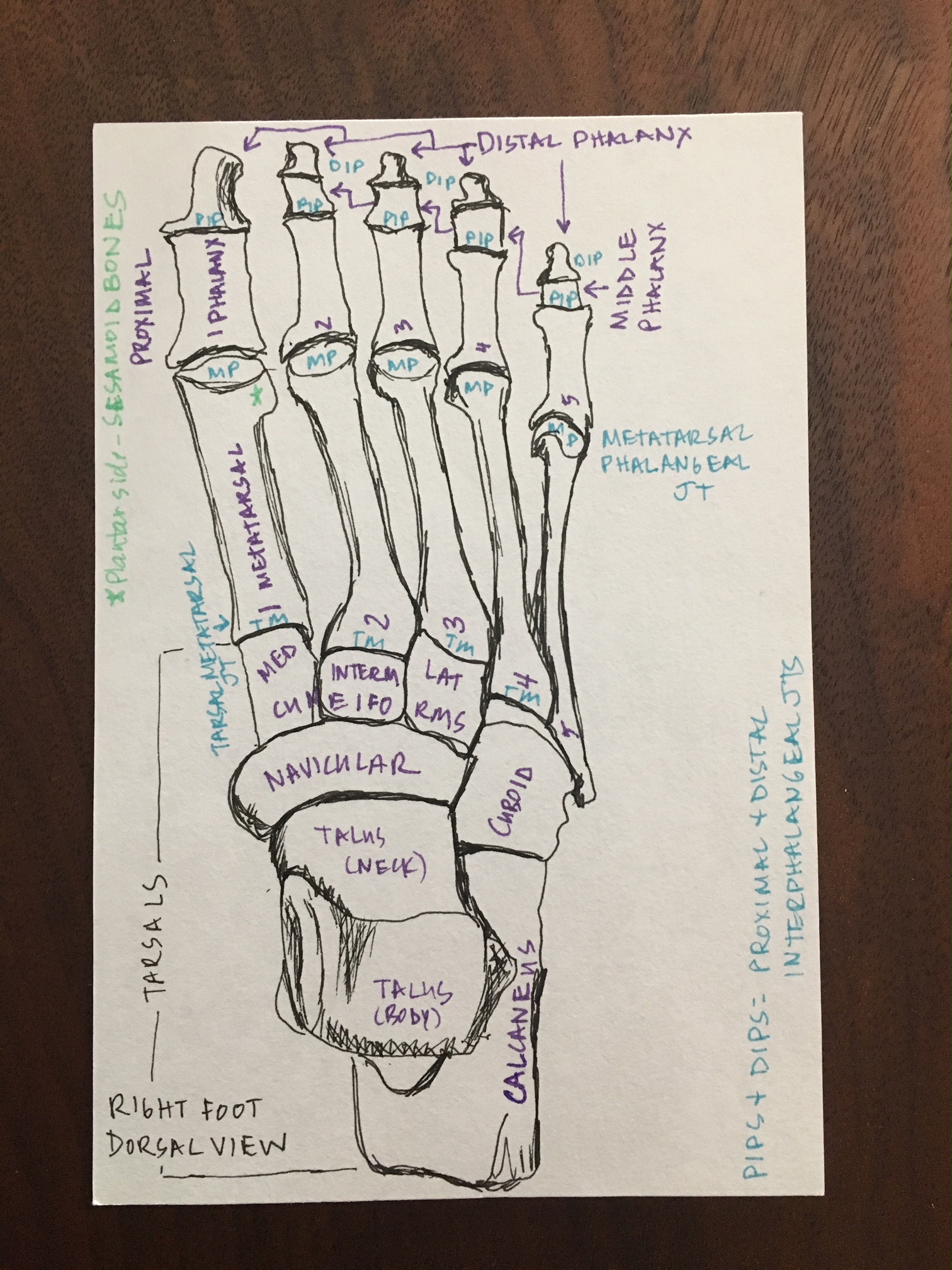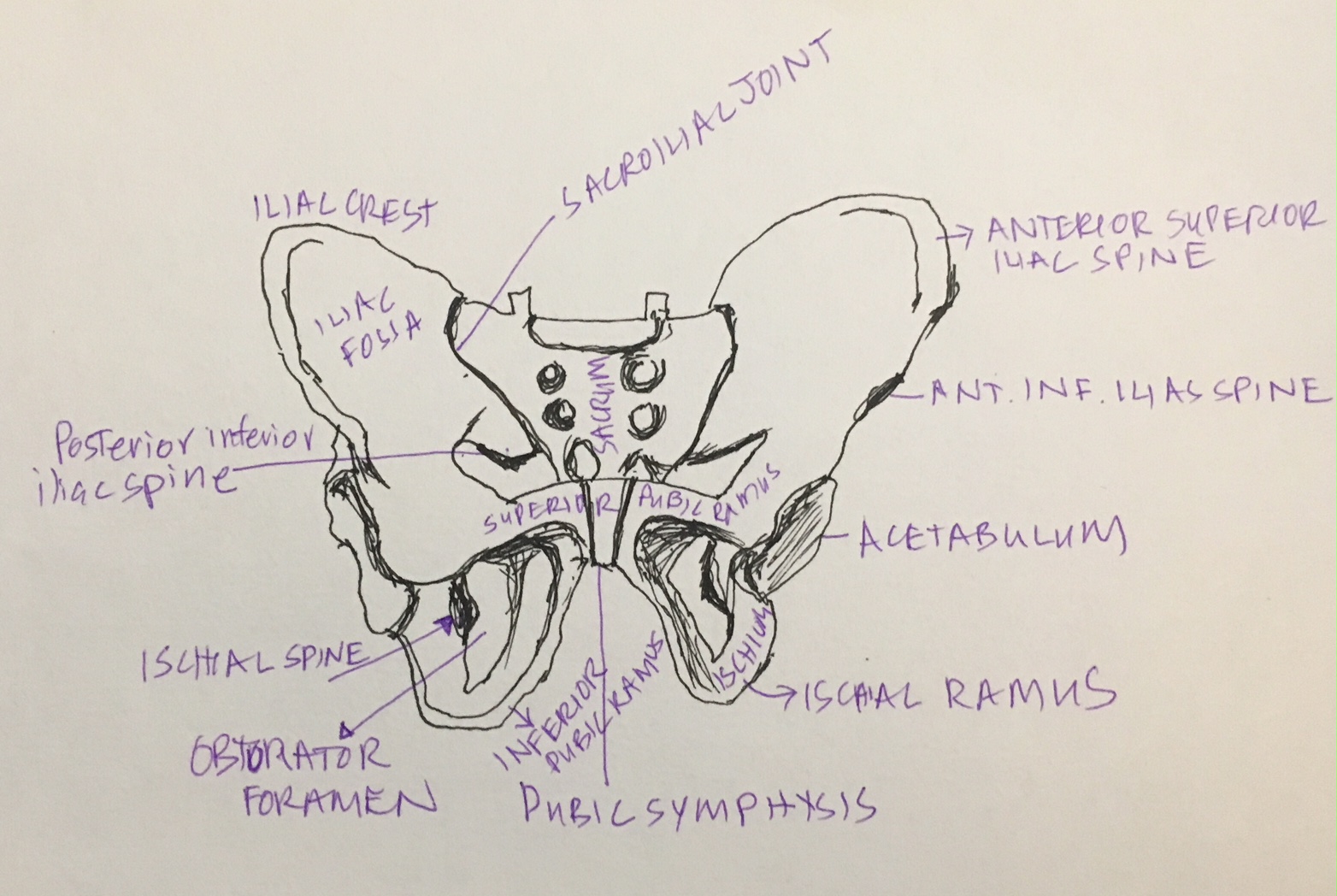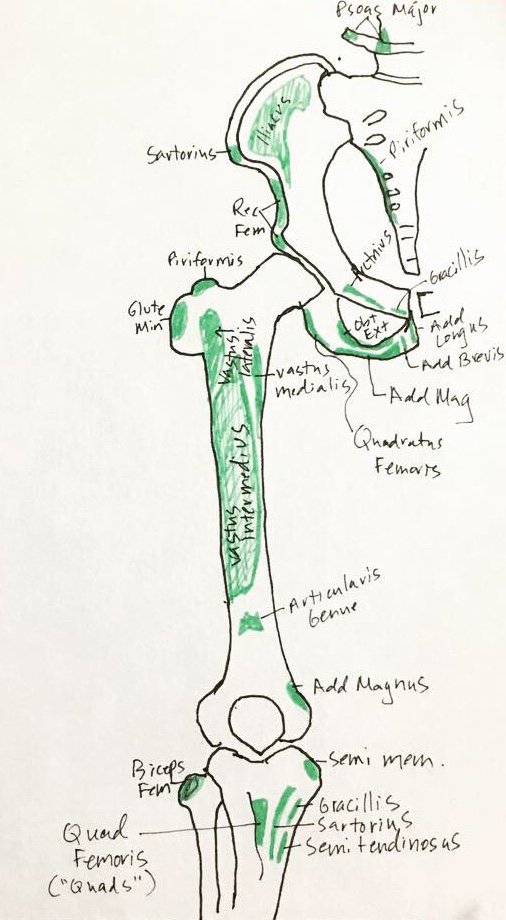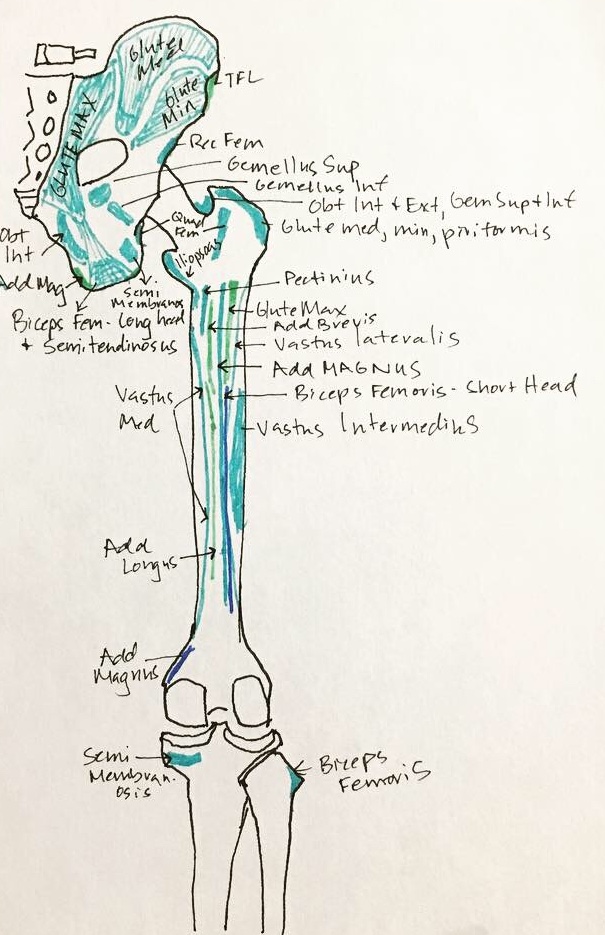I now know ALL the muscles in the body. Ha! I wish. I mean, I think I’ve probably learned about all the muscles in the body, but I don’t remember them all. Yet. We just finished up learning about the lower body, all the way down to the feet. I had no idea that feet are so complicated!! As we learned in class, the complex nature of the feet makes them capable of amazing feets/feats (get it!!), but it also makes them prone to a variety of issues. How many people do you know that have bunions or plantar fasciitis or heel spurs or hammer toes? A lot of these issues are caused by misuse/abuse of the feet. I’m going to try to provide a very high level overview of the feet and then show you what you can do to bring relief and increased awareness to the feet. And before I forget to mention it, if you have any of these issues, neurosomatic therapy can help!! I graduate in February, so come see me!!
Ok. First of all. Let’s look at the boney structure of the foot. You have the big heel bone (aka calcaneus), on top of which sits the talus, which fits into an arch (aka mortise) made by your shin bone (aka tibia) and fibula (the bone that’s on the outside of your lower leg). This forms the joint of the ankle. Next you have an assortment of oddly shaped bones that fit together like puzzle pieces – the navicular, cuboid, and cuneiforms. Next you have the long skinny bones of your foot, the metatarsals, which connect to your toes, which are made up of phalanges. Here is a picture to give you an overview:
These bones are held together by tons of ligaments (very strong connective tissue), and connecting with these bones are all the muscles of your lower leg and foot. These ligaments and muscles maintain the two arches of your foot. Yes! There are two arches down there! There is the longitudinal arch, which forms your instep. And then there is the transverse arch, which goes horizontally across your foot. These two arches work together to absorb force from the ground and transmit it up the body.
Man, I’m just getting started. I really wanted to discuss the the muscles IN the foot too. Did you know there are TWELVE of them (depending on how you count them) and FOUR separate layers of muscles? Just bonkers. But we’ll have to discuss the bonkeriness in another post because this one is already getting too long.
Let’s get to the really fun stuff. What can you do if you have foot pain? One easy thing to do is to get a small, soft ball (I recommend a Yoga Tune Up® ball, due to its squishy, pliable nature) and step on it. Yep. Just stepping on the ball will increase your awareness of your feet and start to dissolve tension between all those tiny joints. Here is a video that will guide you through an eye-opening foot roll.
You can also increase awareness of your feet (and help bring energy down from that monkey mind into your feet, which is very grounding) by meditating on your feet. Here is a 10 minute meditation that will guide you through that.
Hopefully you have a better understanding of your amazing feet now! I hope you find some time to give your feet some love today. Let me know what you think of the video and or meditation.
Have a great Sunday!




